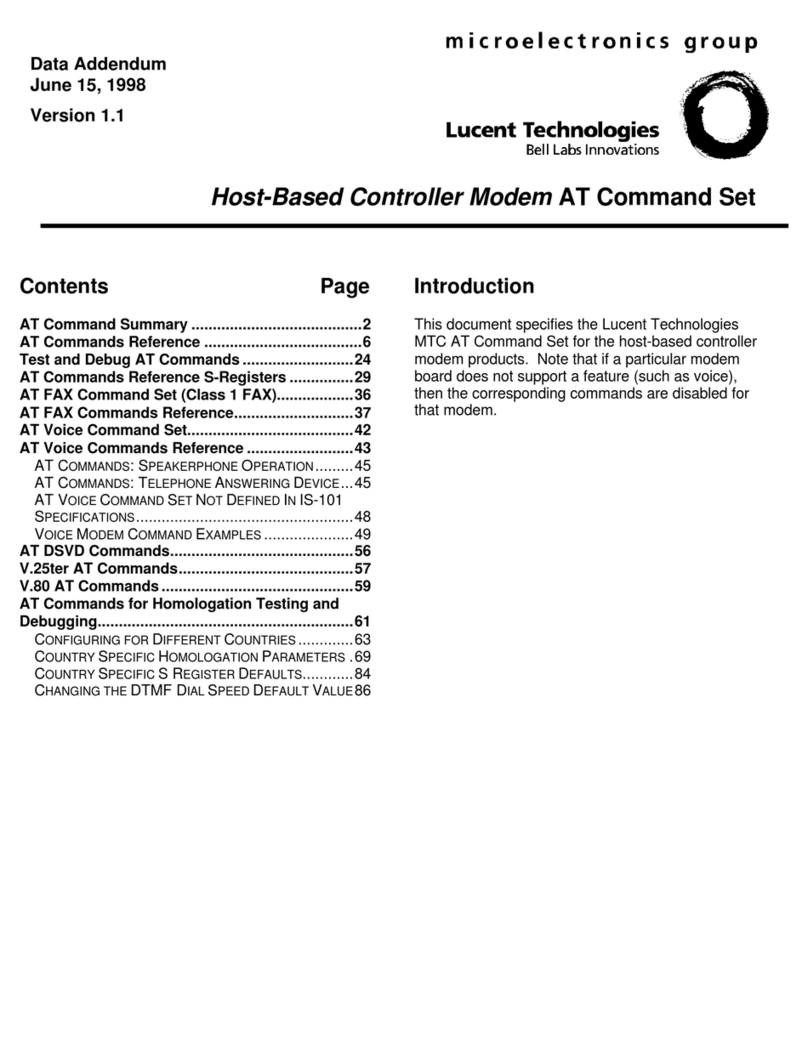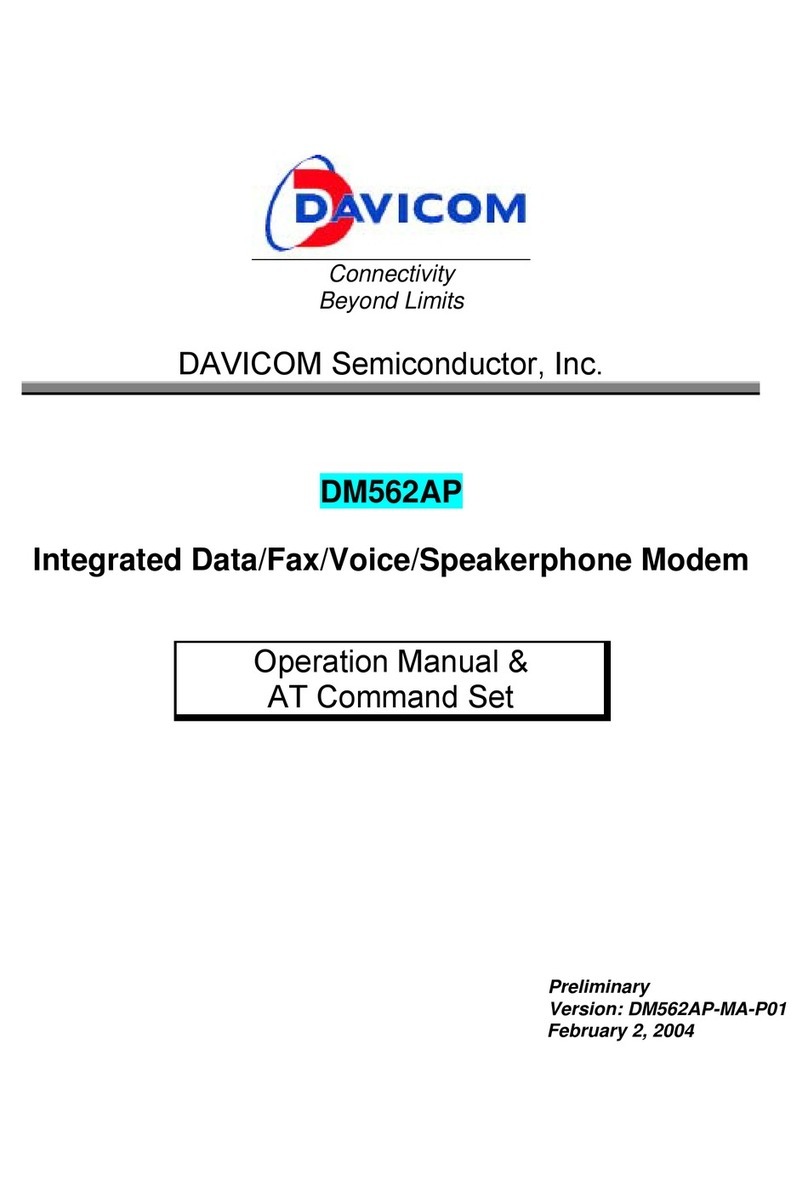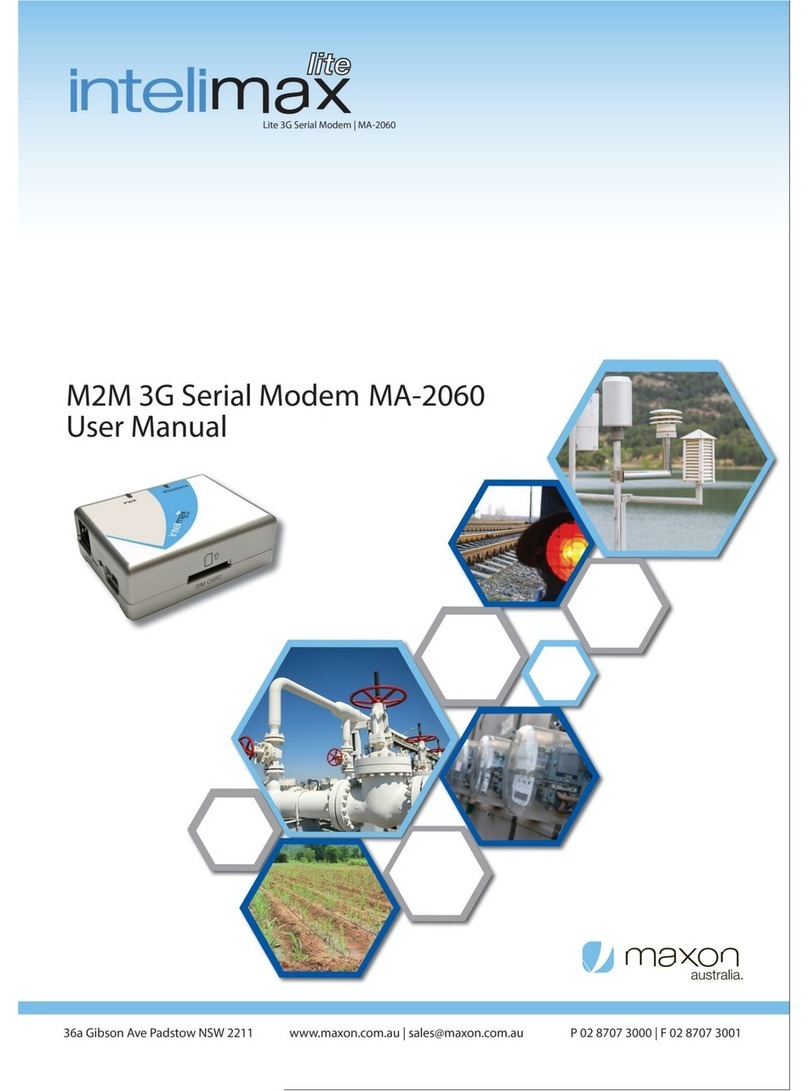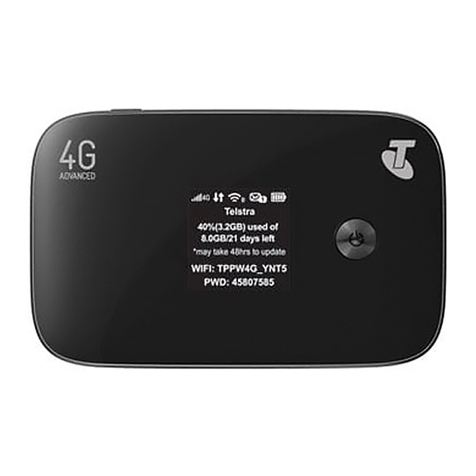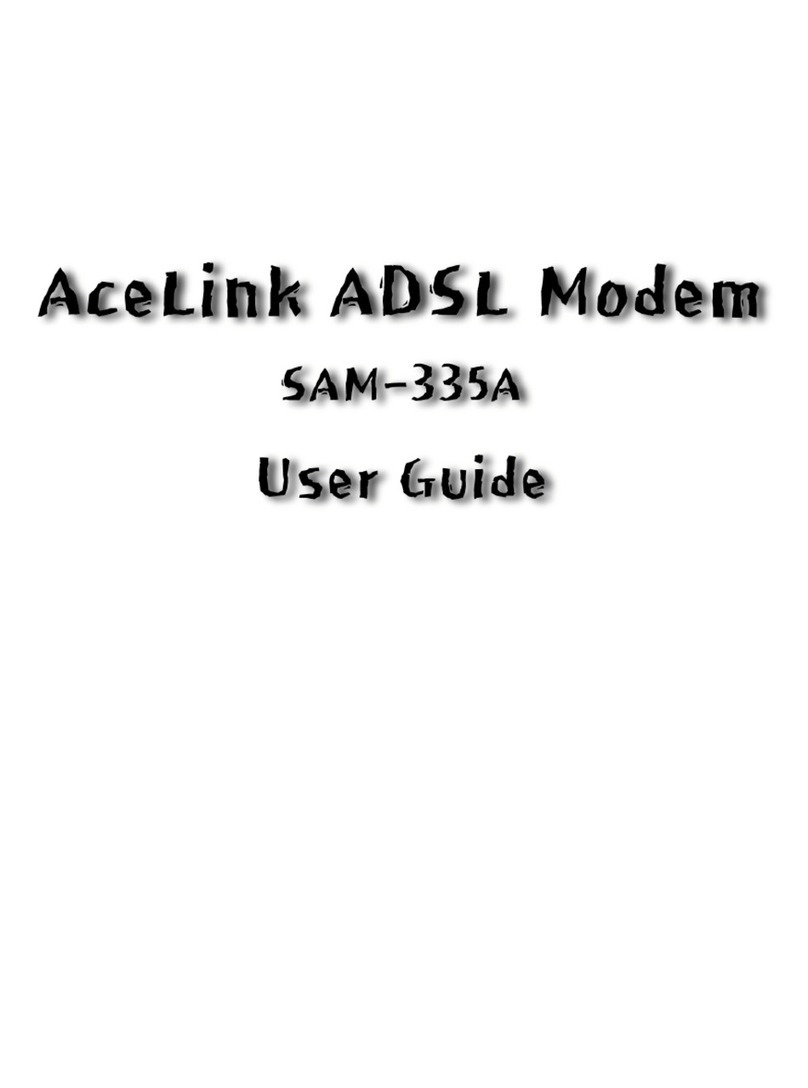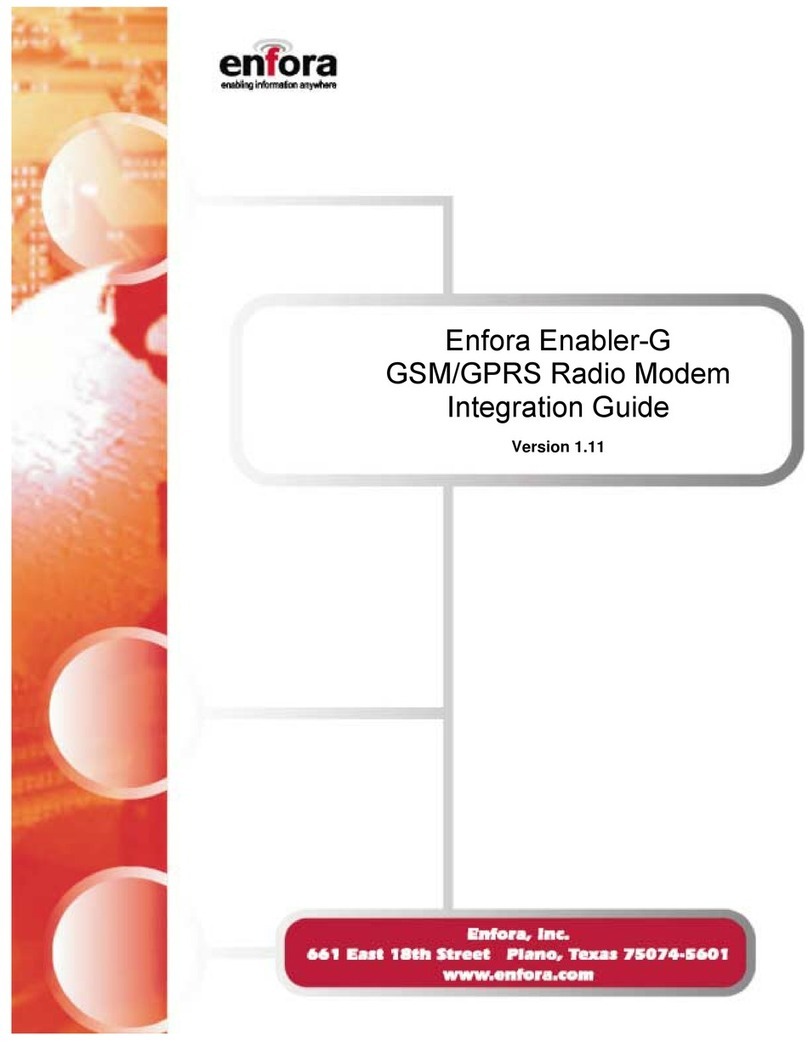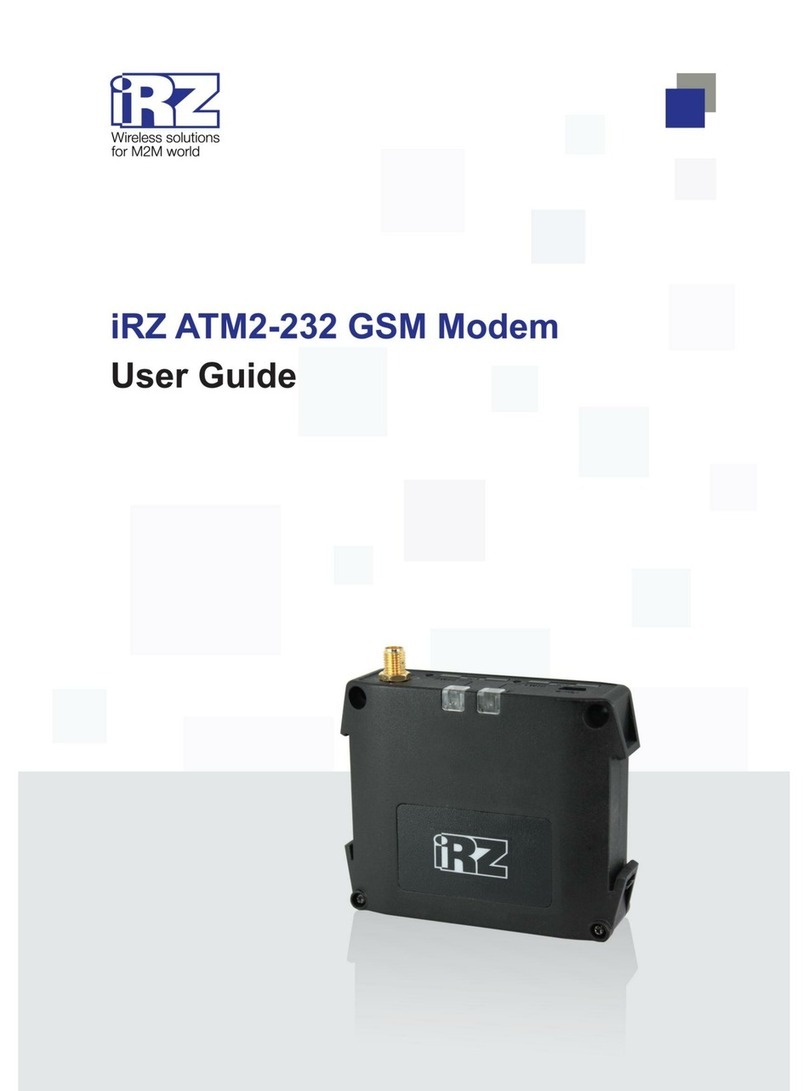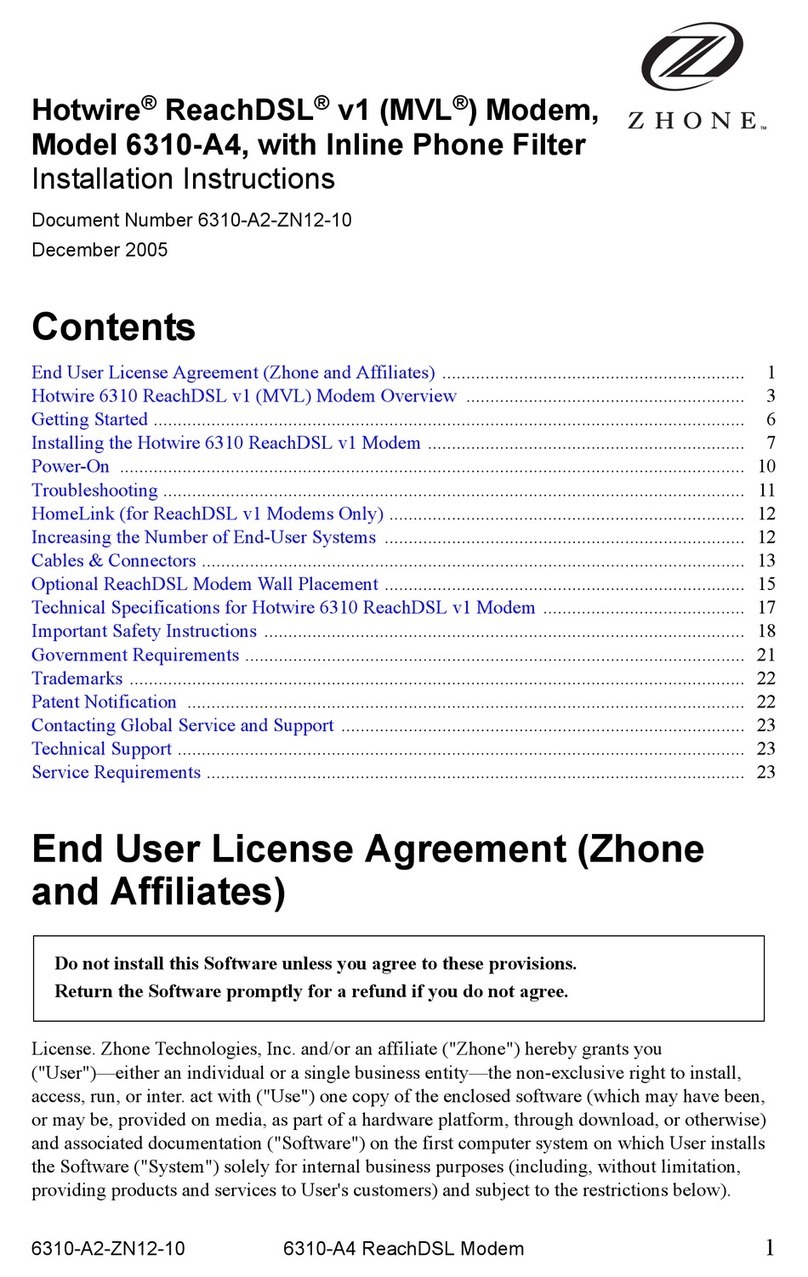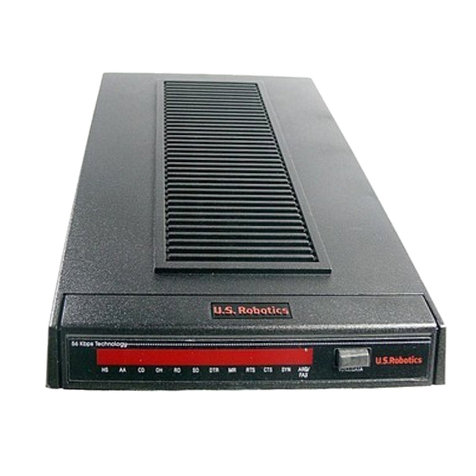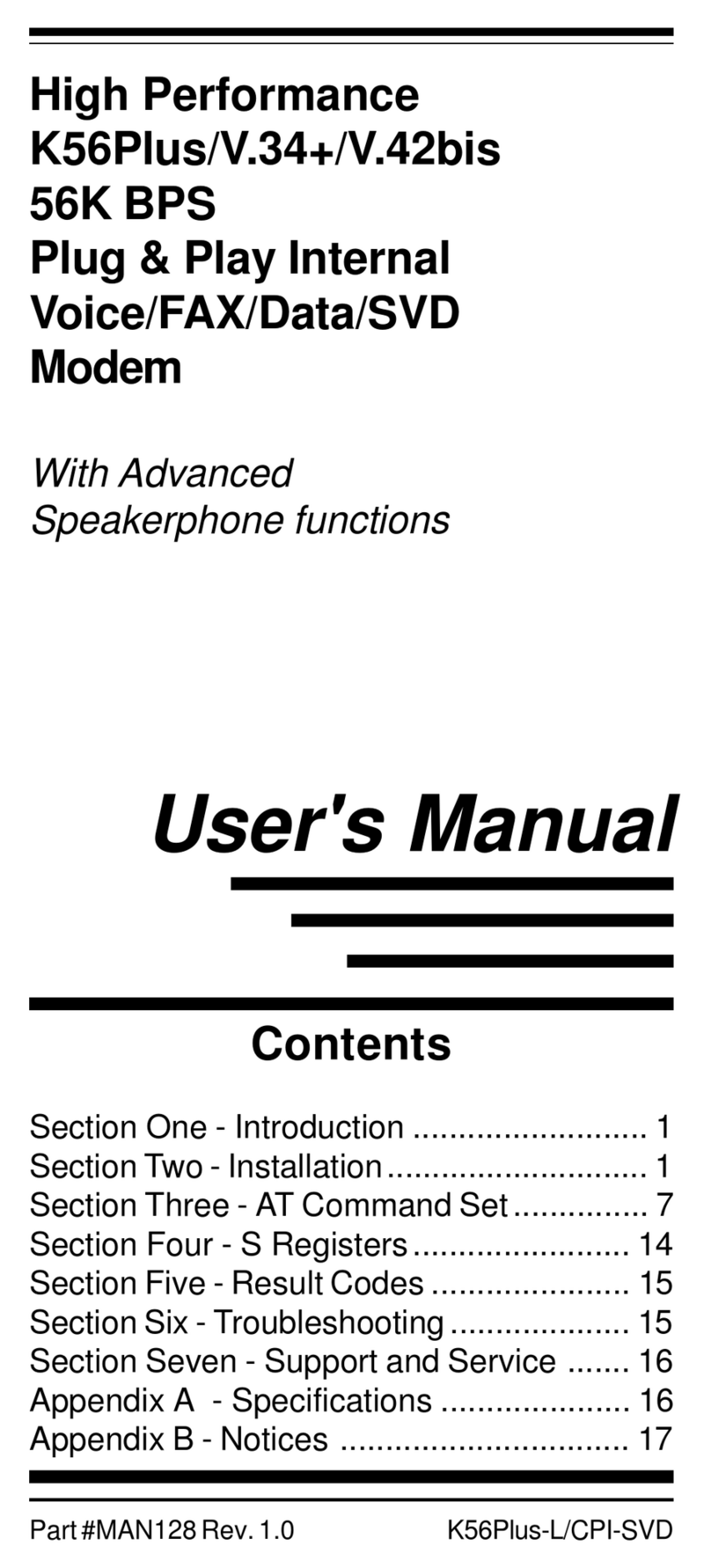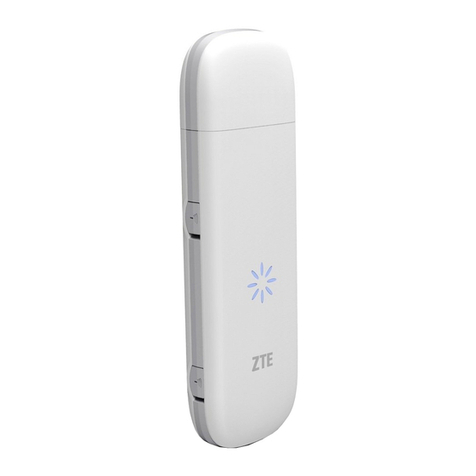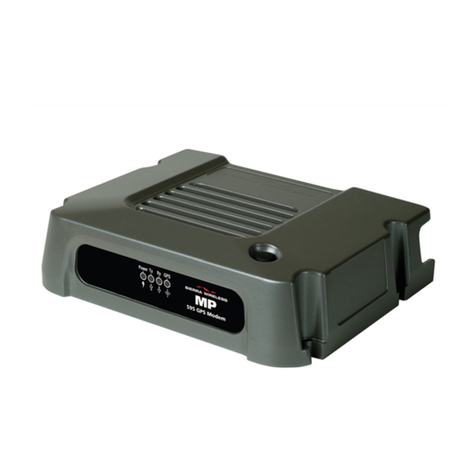Lucent Technologies Inc. 7
Manual
August 2000
Venus
AT Command Reference Manual
AT Command Set (continued)
The ATI11 command may be issued from on-line command mode or after the end of a call. After a call, some of the
values are no longer valid. The following table describes each of the results listed for the ATI11 command.
Table 9. ATI11 Command Results
Result Description
Last Connection V.90, 56K, V.34, or V.32, depending on the type of connection negotiated.
Initial Transmit Carrier Rate Initial upstream rate.
Initial Receive Carrier Rate Initial downstream rate.
Final Transmit Carrier Rate Current or final upstream rate.
Final Receive Carrier Rate Current or final downstream rate.
Protocol Negotiation Result LAPM,
MNP
, or none, depending on V.42 negotiation.
Data Compression Result LAPM,
MNP
, V.42bis, or none, depending on V.42 negotiation.
Estimated Noise Level Mean-square error of received downstream signal. Difference between
received constellation point and reference decision point. This is a dimen-
sionless decimal number that is only valid during a call. Higher numbers
are worse. There is no absolute threshold of goodness; it depends on the
downstream data rate. The number varies during a call, so it is useful to
sample it a few times.
Receive Signal Power Level (–dBm) The received signal power, although labeled with units of -dBm, is only a
relative measure for comparing calls to/from different locations. This
value is valid only during a call.
Transmit Signal Power Level (–dBm) Upstream transmit signal power.
Round Trip Delay (ms) Round trip delay in milliseconds.
Near Echo Level (–dBm) Echo levels are valid for V.34 only.
Far Echo Level (–dBm) Echo levels are valid for V.34 only.
Transmit Frame Count Number of LAPM frames sent upstream during this call. Count wraps
around at 65535.
Transmit Frame Error Count Number of REJ frames received at the analog client modem.
Receive Frame Count Number of LAPM frames received by the client during this call. Count
wraps around at 65535.
Receive Frame Error Count Number of frames received in error by the client.
Retrain by Local Modem Number of retrains or rate renegotiations requested by the modem.
Retrain by Remote Modem Number of retrains or rate renegotiations requested by remote modem.
Rate Renegotiation by Local Modem Number of rate renegotiations requested by the local modem.
RateRenegotiationbyRemoteModem Number of rate renegotiations requested by the remote modem.
Call Termination Cause Reason for call ending. Only valid after call ends. Result codes are as fol-
lows:
■0 = local modem command: ATH, DTR drop.
■1 = remote modem: cleardown, loss of signal.
■2 = no answer, busy, etc.
■3 = training failure V.90, K56flex, or V.34.
■4 = protocol failure if required by \N4, for example.
Robbed-Bit Signaling For PCM connection only, a hexadecimal 6-bit pattern of T1 frames with
robbed-bit signaling.
Digital Loss (dB) For PCM connection only, the downstream digital loss.
Remote Server ID For K56flex connection only, the V.8bis information sent by the server.
Meaning is defined at the server and by convention.
Last PCM S PTR Shows the lastSpointerwhen themodem isexpected to go to PCMmode.




